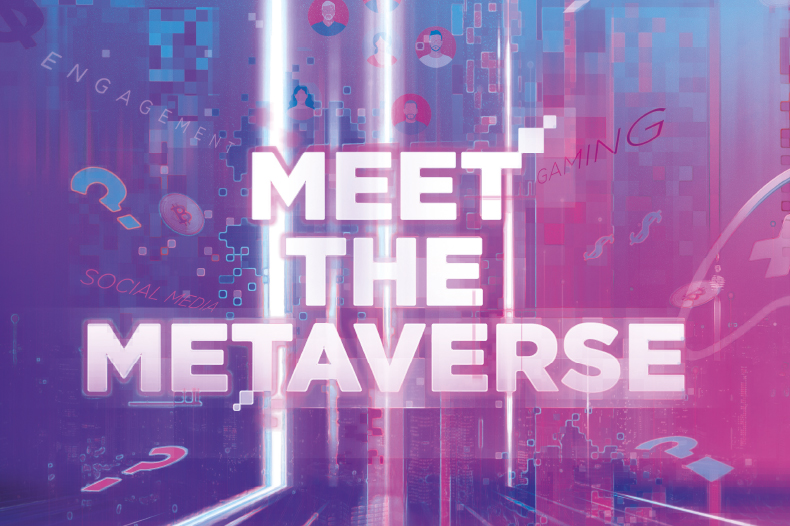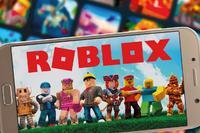Meet the metaverse
Richard May gets us out in front of an online phenomenon

For many people, the meaning of the word “metaverse” will be a complete mystery.

But that won’t last long. Indeed, it’s the next big thing in the world of gaming and social media, and something that all trade mark practitioners should make sure they are aware of.
To be a bit more specific, the metaverse is the future iteration of the internet, in which Epic Games (of Fortnite fame) is investing US$1bn.
It’s also what Facebook is betting its future on (even rebranding its corporate name to Meta).
In science fiction (the word was coined by novelist Neal Stephenson in 1992), the metaverse is a convergence of physical, augmented and virtual reality in which users can interact with a computer-generated environment – in simple terms, it’s an immersive virtual world you inhabit as an avatar.
Think Ready Player One.
Although this is a simple definition, it is one that has multiple layers. In fact, experts believe that a metaverse needs several key characteristics, namely:
- Scalability (the ability to increase its size);
- Persistence (overcoming technical limitations to improve its immersive nature and to allow a continuous virtual world);
- Interoperability (the merging of different virtual worlds and operating systems);
- Economic facility (allowing for trading);
- Identity (enabling online identities for avatars to evolve to bring about a stronger connection to the user);
- Digital and physical realms (spanning across many aspects of life); and
- Multiple contributors (eg, ranging from individuals to commercial organisations).
As these characteristics suggest, the concept of a metaverse is complicated and a true metaverse doesn’t technically exist yet – at least not one with all of these characteristics.
However, early-stage versions of the metaverse are here. These so-called “proto-metaverses” take many forms, including games embracing blockchain technology and/or providing social and educational events.
Fortnite already combines gaming and non-gaming elements in a digital world – and pop stars like Ariana Grande have played concerts in the Fortnite universe in front of millions of fans.
So, the development of a true metaverse is no longer an “if” but a “when”.
Why the metaverse matters
The metaverse provides new ways for brands to engage with consumers. For example, like Fortnite’s live

music performances, many video game companies are now connecting with players through in-game events.
Several have also undertaken brand collaborations for skins (which determine the appearance of your avatar) or digital-only items.
The metaverse will also bring together a range of technological advancements such as cloud computing, AI and blockchain.
There are already a number of blockchain games that use non-fungible tokens (NFTs) and cryptocurrency to facilitate the trading of digital assets in open marketplaces and allow players to not just spend money but to earn it too.
Online games such as Minecraft and Roblox also provide non-coding development tools to simplify the creation of user-generated content.
These technologies raise a number of legal issues that rights holders will need to grapple with before entering a metaverse.
One of the greatest commercial appeals of the metaverse is the opportunity for brands to step into the driving seat and engage directly with consumers at a low cost.
Brands will see this as an opportunity to be innovative in their offers. For instance, fashion labels might provide branded digital clothing, and drinks brands might consider establishing their brand as a health-replenishing elixir for players within the metaverse.
Indeed, this is already happening. In November 2021, Nike launched NIKELAND on Roblox, allowing users to try out digital-only Nike-branded accessories within its universe.
Protecting IP like trade marks in the online landscape has always been a challenge for brand owners.
While the metaverse is proclaimed to be a new frontier, many existing laws are still relevant. However, rights holders should be asking some key questions before they choose to enter.
Protection extensions

Previously, the online use of a brand was considered to be mainly “advertising use” in relation to the underlying goods or services that were being referred to.
However, in a metaverse where there is the potential for digital assets to have independent economic value, there are likely to be questions about trade mark use and what relevant goods and services should be included in a specification to ensure the best level of protection.
It’s almost certain that brands that were once essentially sold through physical retail sales but that are now also present on a website or on social media will need to consider expanding their protection into other classes, such as software and entertainment services, to ensure robust protection within a metaverse.
Entering a metaverse may mean that rights holders find their brands being misused in ways they had not anticipated.
With this in mind, brand licencing is likely to be an important way to maintain quality control, and technology – such as NFTs linked to digital assets and user terms and conditions – will provide a certain level of protection.
Also, the ability to perfectly duplicate digital assets will allow the quality of these items to be maintained as long as rights holders take care when first inserting them into the metaverse.
However, the broader question of what is an acceptable use will vary by brand.
For example, if a brand has a reputation and a carefully crafted image in the real world, are there any actions within a metaverse that would be incompatible with that image?
In practice, quality control may be difficult to manage and enforce, particularly if consumers’ perception is that they “own” a digital asset.
Further, the interoperability of metaverses will inevitably require the mixing of brands between metaverses, with the effect that brands are used in unforeseen ways.
For example, a Peppa Pig avatar appearing in a horror survival game is unlikely to be acceptable.
Companies will need to reconcile their marketing team’s desire for consumers to interact with brands in novel ways with ensuring that the interaction is compatible with brand values.
This is particularly important since the opportunities for identifying and dealing with infringement issues within a metaverse are not yet clear.
New complexity

Trade mark infringement in the metaverse is likely to be complex.
One thing that is certain is that as the metaverse grows, so will the user-generated content. This alone will result in an increase in unauthorised trade mark use, and context will inevitably be crucial.
For instance, does the unauthorised use have an impact on the function of the trade mark registration (meaning infringement), or could it amount to honest descriptive use (not infringement)?
And just who is liable for the infringement: the user/generator or the platform?
It’s almost certain that the current framework for intermediary liability will broadly capture the platforms providing metaverse-related services.
Accordingly, it is likely that current “notice and take down” procedures will still provide rights holders with a non-court forum in which to complain, but undoubtedly this area will continue to develop as the metaverse ecosystem grows.
Practically, there are potential issues with spotting infringements when they occur. While there are brand-watching services that use web-crawling technology to scan for online infringements, it is not clear how this technology can be adapted to a metaverse.
The net result of all of this is that enforcement budgets will need to increase and, if there is budget to take action, rights holders will need to adopt a considered approach and be mindful of the PR implications.
In the past, brand enforcement on the part of video game brands has received mixed reactions from consumers and, in many cases, children have been the perpetrators of the infringement.
What’s the way out?
For brands, an exit strategy from a metaverse is as important as an entry strategy. Once a decision has been made to withdraw from a metaverse, there is a risk of losing the ability to control or monitor activity there.
This may not be of commercial concern if there is no revenue stream to protect after withdrawal. However, there is still a risk of harm to a brand’s reputation.
Accordingly, rights holders should consider whether it is possible to insert contractual obligations into metaverse service agreements to ensure that there is no unlicensed use within those marketplaces for a set period after the brand has left.
However, as the metaverse expands and develops, this may become more difficult.
If rights holders are using NFTs within a metaverse, it may be worth considering disabling the servers that the underlying content derives from so as to remove access to it.
To avoid reputational issues, it would also be prudent to include termination rights within an end-user licence agreement for consumers and an explanation that only these digital items are licensed and that the consumer has no rights in the IP.
Approach with caution
These considerations are likely just the tip of the iceberg. While the metaverse provides lots of opportunities for brands and first-mover advantage will be key, rights holders should be hesitant about launching into a metaverse without properly considering the issues raised above.
And while IP is critical to the metaverse, there will be other issues for rights holders to consider too. It is important to treat the metaverse with caution and to have an open discussion about how to manage the risks.
Brand extensions in the metaverse
- The metaverse increasingly hosts non-game social activities, including brand-driven events such as virtual concerts, product launches and fashion shows – a trend that’s known as Games as a Platform (GaaP).
- It also facilitates the merging of virtual and physical worlds. For example, it allows users to try on virtual clothes using augmented reality (AR).
- Digital avatars will become more complex over time, with digital pets and vehicles, for example. This will further exploit the popularity of customisable in-game “cosmetics” (ie, skins).
Luxury link-ups
In 2019, French fashion house Louis Vuitton entered into a partnership with Riot Games to design outfits (skins) for characters in fantasy game League of Legends.
For example, it created a “prestige skin” for two characters, as well as designing a physical case for the League of Legends World Championship Trophy, according to a report on AdAge.com.
The finals of that competition were said to been watched by nearly 100 million unique viewers.
Meanwhile, online game Drest allows players to style themselves with high-fashion, and Balenciaga went as far as to create a video game, Afterworld: The Age of Tomorrow, just to showcase a season’s collection.
See Osborne Clarke’s full Metaverse Report here.
Read the full issue






